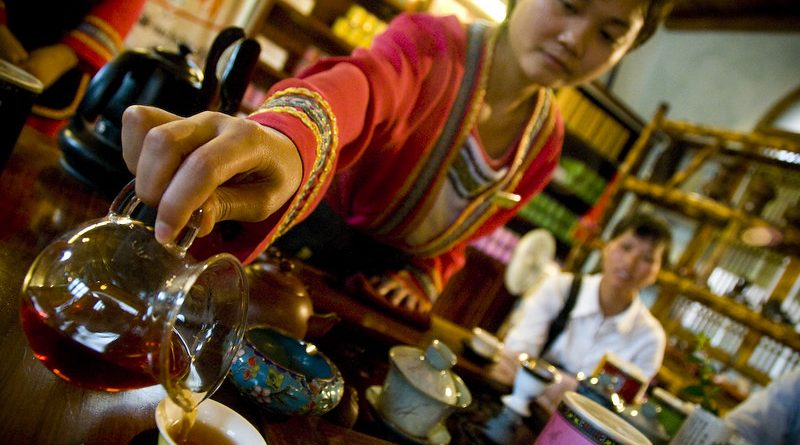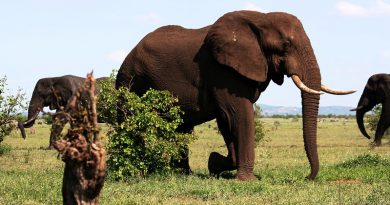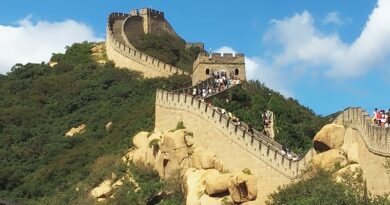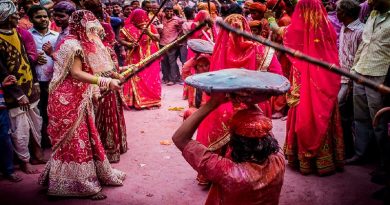Study Guide: A Short History of Tea
Food Facts:
Where: Began in China, now consumed throughout the world, most notably in Japan, England, America, Russia and India.
Serving Suggestion: Green Tea – serve black, honey but no sugar. Black teas – take with milk and sugar to taste.
Try an English cream tea served with scones or cake and cream at 4pm.
Health: Teas cleansing properties are thought to alleviate pains and strengthen the immune system.
More tea is consumed throughout the world than any other liquid, except water. Derived from the leaves of the Camellia Sinensis tree, the infusion is valued for its medicinal properties, as well as enjoyed as a beverage.
Introduction:
Drinking Tea plays a central part in our lives. It is a universal phenomenon with millions of people the world over enjoying it on a daily basis. It is hard to imagine a world without tea. In fact it has become the most widely consumed beverage on earth after water.
Tea has a long history that spans across numerous countries over thousands of years. Legend says that tea originated in 2737 BC when the highly disliked Emperor Shen Nung of China was removed from power and driven out to an isolated spot in Southern China. Having no money to drink anything else but water, Shen Nung happened to be sitting under a tree one day when a gust of wind dropped a few leaves into his cup of boiling water. He loved the blend and found it so relaxing that he sat under that tree for the next seven years and wouldn’t drink anything else.
Today, tea is the most popular drink in the world behind water, and its impact on culture and politics is huge. Read on to learn more about where tea came from and what its place is in today’s society.
Origins and History:
Tea was first discovered in Chin, in the mountains around Sichuan and Yunnan, and according to earliest legend Emperor Shen Nung first sampled the drink when some unidentified leaves fell into his pot of hot water. Allegedly, Shen Nung used to wander the country recording the effects of infusions made from the leaves and berries of various plants. He discovered that tea cured him of a stomach ache contracted as a result of drinking a toxic herb.
Tea drinking became an elaborate art form during the Tang Dynasty (616 – 907). This was the heyday of the Chinese Empire, and traders journeyed to China from the Middle East to obtain silk, porcelain and tea. Over time, the practice of drinking tea spread across Asia, and later to Europe and the America.
People in China were the first drinkers of tea, and they did so for hundreds for years before it was finally discovered by European explorers. The Chinese thought tea to be hugely beneficial for health and eventually it was used as a religious offering! A scarce and rare product, tea was only consumed by royalty and it wasn’t until the discovery of more kinds of tea plants during the Tang Dynasty that tea became available for people of lower classes.
At this point, tea came in the form of bricks. Leaves of tea would be crushed and pressed into a mold and then dried. When it came time for preparation, a small portion of the brick would be ground and boiled in water. Powdered tea was also popular for green teas; after pouring boiling water over it, the tea would turn into a frothy drink. It was also during this time that knowledge of tea began to spread; Japanese priests studying abroad in China brought tea back to their homes and shared it with their fellow priests and the rich.
Buddhists made good use of tea. While meditating they’d often drink a cup to stay awake during their mediations and soon the Japanese Tea Ceremony was developed, which made tea drinking a spiritual and serious experience. The Emperor of Japan loved tea so much he ordered tea seeds and had them grown in Japan so that everyone could access it.
Tea finally made its way over to England when King Charles II married Catherine of Braganza, a Portuguese princess, in the 17th century. Surprisingly, though many people associate tea with being quintessentially British, the popularity of the drink is wholly due to the foreign princess.
Asia is by far the biggest producer supplying 80-90% of all tea, mainly from India, China, Sri Lanka and Indonesia. India is the largest individual tea-producing country, growing nearly 30% of the world’s tea. Tea was introduced to East Africa at the beginning of the 20th century. It has become an important crop there, particularly in the highlands of Kenya.
Teas Around the World:
There are three basic types of tea. Black tea is fully oxidised and is the most popular variety in Europe & the US, green tea, a staple in the Orient, is non-oxidised and has more delicate flavour, and Oolong tea, which is partly oxidised and is a cross between the other two in flavour and taste.
Whatever the type of tea they favour, different countries have their own unique history of tea-drinking tradition and taste.
Japan
A Buddhist Priest called Yeisei was the first person to bring tea seeds from China to Japan. He had observed the beneficial use of tea in meditation, and from this early use tea has continued to be associated with Zen Buddhism.
It quickly gained popularity in the imperial court and other sectors of society, and became elevated to an art form universally known as the ‘Japanese Tea Ceremony’. The ceremony involves making and serving tea in the most perfect, polite and gracious manner, and it requires years of training to administer at a tea ceremony.
America
The first tea was brought to the United States in the 1650s, by a Dutchman called Peter Stuyvesant. At this time the city now known as New York was a Dutch colony called New Amsterdam. When the British acquired the colony they were astonished at how popular tea was with the colonial women.
By 1720, the tea trade was centred in New York, Boston and Philadelphia. However, the colonial people were disgruntled at the tough taxes imposed on tea by the British. Their resentment reached a fever pitch in December 1767, when the men of Boston dressed up as Indians, openly purchased smuggled tea and threw hundreds of pounds of British tea into the port. These events went down in history as the Boston Tea Party, and precipitated the American Revolution.
At the beginning of the 20th century the Americans invented iced tea, now a popular summertime beverage. At around the same time a New Yorker named Thomas Sullivan first came up with the eminently practical concept of tea bags. These days, tea is enjoying a revival in popularity with health conscious Americans but is secondary to the American staple brew of coffee.
Tea continued to be traded between England and its colonies in America, especially during the 1720s. However, taxes on tea were ridiculously high and smuggling became common just as it did in England. One piece of legislation in particular, the Tea Act of 1773, angered the colonists, as it was meant to increase profits for the English by skipping over local merchants and selling directly to the people. After continued rejection of tea shipments, the colonists eventually had enough; a group called the Sons of Liberty, led by Samuel Adams, planned to raid a new shipment that was meant to be unloaded in Boston on December 16th, 1773. On that same night, a small group of other protesters decided to dump tea into the Boston Harbor while dressed up as Mohawk Native Americans. Over the course of three hours, over 340 tea containers were thrown into Boston Harbor and thus the American Revolution was started.
Years and years later, though Americans separated themselves from the British, they’ve still kept up a few traditions and contributed a few inventions of their own. During the country’s first World Fair, iced tea was introduced by a man named Richard Blechynden, who knew that no one would be interested in hot tea during the summer fair. Thomas Sullivan, a man from New York, developed the tea bag. He always sent out his loose tea in silk muslin bags and it wasn’t until he delivered them to local restaurants that he saw them brewing their tea with the bags still on. Right away, he began marketing the tea bags for their convenience and no fuss packaging and the rest is history!
England
By the 17th century Dutch traders brought tea to Europe, where it rapidly gained popularity. When the Dutch Infanta Catherine Braganza married King Charles II in 1662, she brought with her to England a chest of tea. It immediately became the beverage of choice in English high society, replacing ale as the national drink.
The English serve tea with milk, and add sugar to taste. Afternoon tea is an English institution, accompanied by sandwiches, scones or cake.
Russia
The Russians first encountered tea in 1618, when the Chinese made a gift of several chests to Tsar Alexis. By the end of the 17th century China and Russia were engaged in trade relations, but the journey between the two countries was long and hazardous and the cost of tea was extortionate. It was another hundred years before the price of tea fell sufficiently for the habit to percolate through to all sectors of society. These days tea and vodka are the Russian national drinks. The Russians make tea in using a samovar, a large water heater and tea pot, and drink it strong and sweet.
India
India is responsible for cultivating much of the world’s tea, and Indian varieties such as Darjeeling, Assam and Nilgiri are amongst the most popular. However the first plantations in India were only established by the British colonisers in the 19th century.
Long before the commercial production of tea started in India in the late 1830s, the tea plant was growing wild in the jungles of north east Assam.
Discovery of the Indian tea bush was regarded by the British as exciting news. Envious of China’s monopoly on tea, and resentful of the money they had to spend on their habit, the British had long wished to be able to grow their own tea. The British saw the Indian Assam as inferior to the Chinese bush, but thought that the evidence of local plants indicated good soil for transplanting Chinese seedlings.
They immediately procured some seedlings of the Chinese variety (the British smuggled thousands of seedlings during the opium wars, so resentful were they of the Chinese monopoly) and undertook to grow them in the Assam valley and the mountainous Darjeeling region. Fourteen years later, and after many unsuccessful attempts were made, the British resigned themselves to growing the native Assam.
Soon after, the British-owned Indian Tea Association began an earnest effort to popularise tea in India. They organised several promotional campaigns – tea stalls were set up in cities and towns, factories were encouraged to give tea breaks to their workers, and even home demonstrations were organised. When the railways arrived, tea stalls were set up at rail stations as well. Tea drinking gradually spread in India, gaining momentum after the Second World War. By the end of the 1900’s, Indians were drinking almost 70 percent of a huge crop of 715,000 tons per year.
The most popular form of tea in India is masala chai; sweet, milky tea spiced with cardamom and cinnamon. “Proper” English tea is also drunk among many communities and classes, especially those who had trading and social relations with the British. Chai is such an integral part of the Indian cultural that you cannot get away from it if you tried. Even in the most remote places you may not be able to get food or drinkable water but there will always be someone there to give you a hot cup of chai. The spices used in Indian Chai tea vary from region to region and among households in India. The most common are cardamom, cinnamon, ginger, cloves, and pepper. Indian chai produces a warming, soothing effect, acts as a natural digestive aid and gives one a wonderful sense of well being. It’s difficult to resist a second cup.
Tea is now grown widely in India. There are over 2000 producers of tea, with the majority of the estates located in Assam, West Bengal, Tamil Nadu and Kerala. Many of these estates produce very high quality teas and have earned a place for themselves in the international tea market. Today, India is one of the world’s largest producers of tea with 13,000 gardens and a workforce of more than 2 million people. It also provides the tea leaves that go into the world’s biggest brands – Tetley and Typhoo.
The Opium Wars: England and China 1830 – 1860
Two things happened in the eighteenth century made it difficult for England to balance its trade with the East. First, the British became a nation of tea drinkers and the demand for Chinese tea rose astronomically. It is estimated that the average London worker spent five percent of his or her total household budget on tea. Second, northern Chinese merchants began to ship Chinese cotton from the interior to the south to compete with the Indian cotton that Britain had used to help pay for its tea consumption habits. To prevent a trade imbalance, the British tried to sell more of their own products to China, but there was not much demand for heavy woollen fabrics that Britain specialised in, in a country accustomed to either cotton padding or silk.
The only solution was to increase the amount of Indian goods to pay for these Chinese luxuries, and increasingly in the seventeenth and eighteenth centuries the item provided to China was Bengal Opium. With greater opium supplies had naturally come an increase in demand and usage throughout the country, in spite of repeated prohibitions by the Chinese government and officials. The British did all they could to increase the trade: They bribed officials, helped the Chinese work out elaborate smuggling schemes to get the opium into China’s interior, and distributed free samples of the drug to innocent victims.
The cost to China was enormous. The drug weakened a large percentage of the population (some estimate that 10 percent of the population regularly used opium by the late nineteenth century), and silver began to flow out of the country to pay for the opium. Many of the economic problems China faced later were either directly or indirectly traced to the opium trade. The government debated about whether to legalize the drug through a government monopoly like that on salt, hoping to barter Chinese goods in return for opium. But since the Chinese were fully aware of the harms of addiction, in 1838 The Emperor decided to send one of his most able officials, Lin Tse-hsu (Lin Zexu, 1785-1850), to Canton (Guangzhou) to do whatever necessary to end the traffic forever.
Opinion in England was divided: Some British did indeed feel morally uneasy about the trade, but they were overruled by those who wanted to increase England’s China trade and “teach the arrogant Chinese a good lesson”. Western military weapons were far superior to China’s. The emperor therefore had no choice but to accept the British demands and sign a peace agreement. This agreement, the first of the “unequal treaties,” opened China to the West and marked the beginning of Western exploitation of the nation! The British saw to it that Indian opium remained a legitimate article of commerce in China until 1908.
The commerce in tea and the opium that paid for it continued without interruptions even during the hostilities. And by 1844 Britain was importing fifty-three million pounds annually, well over twice as much tea as she had at the beginning of the century, including significant tonnage of black teas for the first time.
Afternoon Tea – A Quintessentially British Pastime
Whilst the custom of drinking tea dates back to the third millennium BC in China and was popularised in England during the 1660s by King Charles II and his wife, it was not until the mid 17th century that the concept of ‘afternoon tea’ first appeared.
Afternoon tea was introduced in England by Anna, the seventh Duchess of Bedford, in the year 1840. The Duchess would become hungry around four o’clock in the afternoon. The evening meal in her household was served fashionably late at eight o’clock, thus leaving a long period of time between lunch and dinner. The Duchess asked that a tray of tea, bread and butter (some time earlier, the Earl of Sandwich had had the idea of putting a filling between two slices of bread) and cake be brought to her room during the late afternoon. This became a habit of hers and she began inviting friends to join her.
This pause for tea became a fashionable social event. During the 1880’s upper-class and society women would change their gowns for their afternoon tea which was usually served in the drawing room between four and five o’clock. The Etiquette of Modern Society points out that a thoughtful hostess should always provide biscuits with tea, since these can be eaten more easily than sandwiches without removing one’s gloves.
Some poorer households also adopted the practice of afternoon tea, but more common among the working classes was ‘high tea’. During the seventeenth and early eighteenth centuries, when most people worked in agriculture, the working classes tended to have the main meal of their day at midday, with a much lighter supper in the evening.
But after the industrial revolution, more and more people were employed for long shifts in factories or mines, and hot midday meals were thus less convenient. The custom developed of having a high tea in the late afternoon, at the end of the working day, consisting of strong tea, and hearty, hot food. Unlike afternoon tea, high tea was the main meal of the day, rather than a stop-gap between lunch and dinner.
More Information
How Tea is Produced
Informative factsheet on the processes and origins of the Tea plant from Tetley Tea
Afternoon Tea
Planning a Trip to England? Fancy a spot of tea? Here is your perfect guide to finding the best Afternoon Tea.
The Fortnum and Mason Guide to Tea
Tea: A History of the Drink That Changed the World by John Griffiths
A study of the phenomenon as well as the commodity, this is a comprehensive survey of the drink that is imbibed daily by more than half the population of the world.
World of Tea
Great news, info & fun tea facts, sponsored by Stash Tea.
Tea Time
Online tea-lovers shop
For All the Tea in China: by Sarah Rose
How England Stole the World’s Favourite Drink and Changed History
Zaynin Kanji









